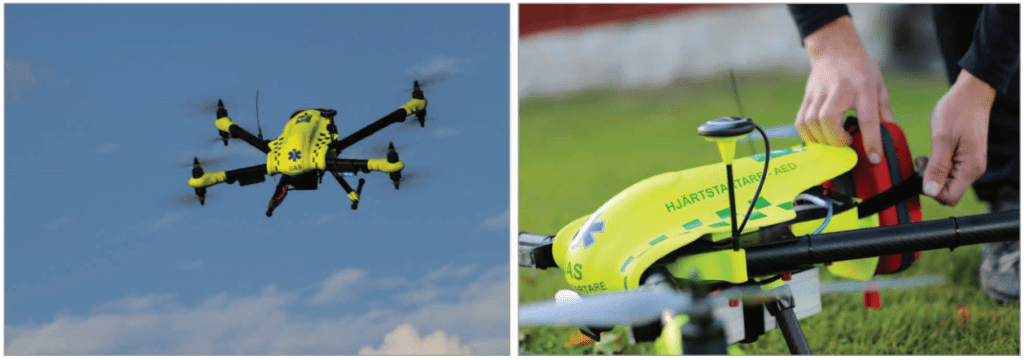Researchers at the Karolinska Institute in Sweden hope to lower the response time for cardiac arrest patients by equipping drones with defibrillators to carry them wherever they’re needed — much faster than a conventional ambulance could.

Response time is paramount in cases of cardiac arrest, as every minute without CPR and defibrillation reduces a patient’s survival chance by 10%. Having someone perform CPR improves these odds but usually doesn’t cut it by itself, and a defibrillator shock must be applied to jump-start the heart. Even in hospitals, where help is just around the corner only roughly one in ten people survive a cardiac arrest. Outside of the hospital, though, that rate drops even lower.
A team of researchers led by Jacob Hollenberg at the Karolinska Institute in Sweden hope to stack the odds in the patients’ favor by attaching defibrillators to drones which can fly wherever they’re needed, around the clock, much faster than an ambulance. They’re currently testing the prototype at a fire station in Norrtälje, a rural location near Stockholm, by testing its performance against that of ambulances in previous cases of cardiac arrest.
Flying4Life
All objectives were selected from cases that had taken place in the past 8 years within a 10-kilometer radius around the station. The prototype defibrillator-wielding drone performed 18 flights with an average arrival time to the emergency location of 5 minutes 21 seconds. By contrast, the average arrival time of ambulances at the time the emergencies took place was 22 minutes.
“If we can decrease the time in cardiac arrest from collapse to defibrillation by a few minutes, hundreds of lives would be saved each year,” Hollenberg said.
Hollenberg’s team is now working with local emergency services for the drone’s baptism by fire — real-emergency dispatches — to see if it can improve on the response time. If all goes well, the team plans to have the drone system up and running within a year or two, they add.
But no matter how quickly the drones get there, first response should remain a top priority. Teaching people how to properly perform CPR could prove to be a very cheap, low-tech way to save a lot of lives in the long run. And many people have recognized its importance, with cities such as Stockholm or London trialing apps that alert people trained in CPR of nearby cases of cardiac arrest.
But the drones have an undeniably huge potential in the field of emergency response. Hollenberg’s team has also tested drones’ efficacy in searching for people who are drowning, and these flying bots could prove invaluable for applications in rugged areas, in emergencies involving chemical, biological or nuclear materials, or simply for delivering precious medical supplies in otherwise inaccessible areas.
The full paper “Time to Delivery of an Automated External Defibrillator Using a Drone for Simulated Out-of-Hospital Cardiac Arrests vs Emergency Medical Services” has been published in the journal JAMA.






